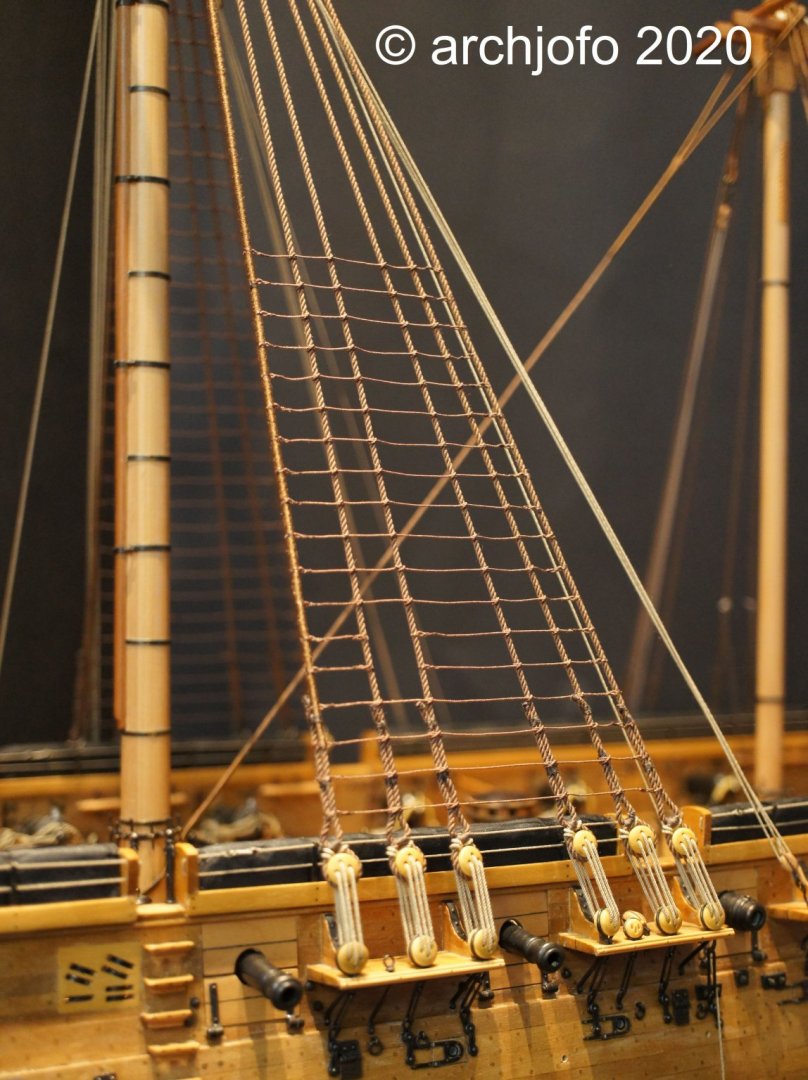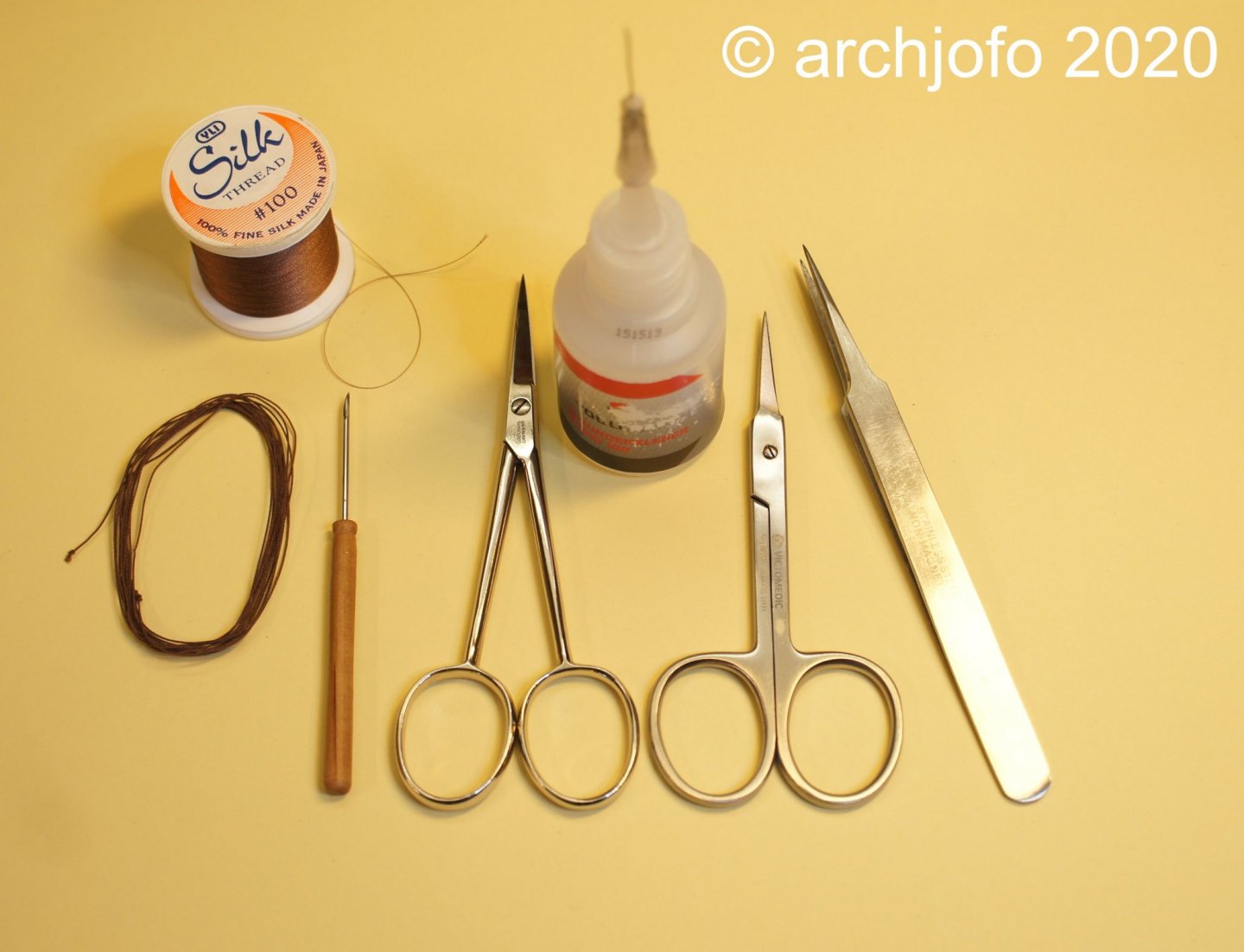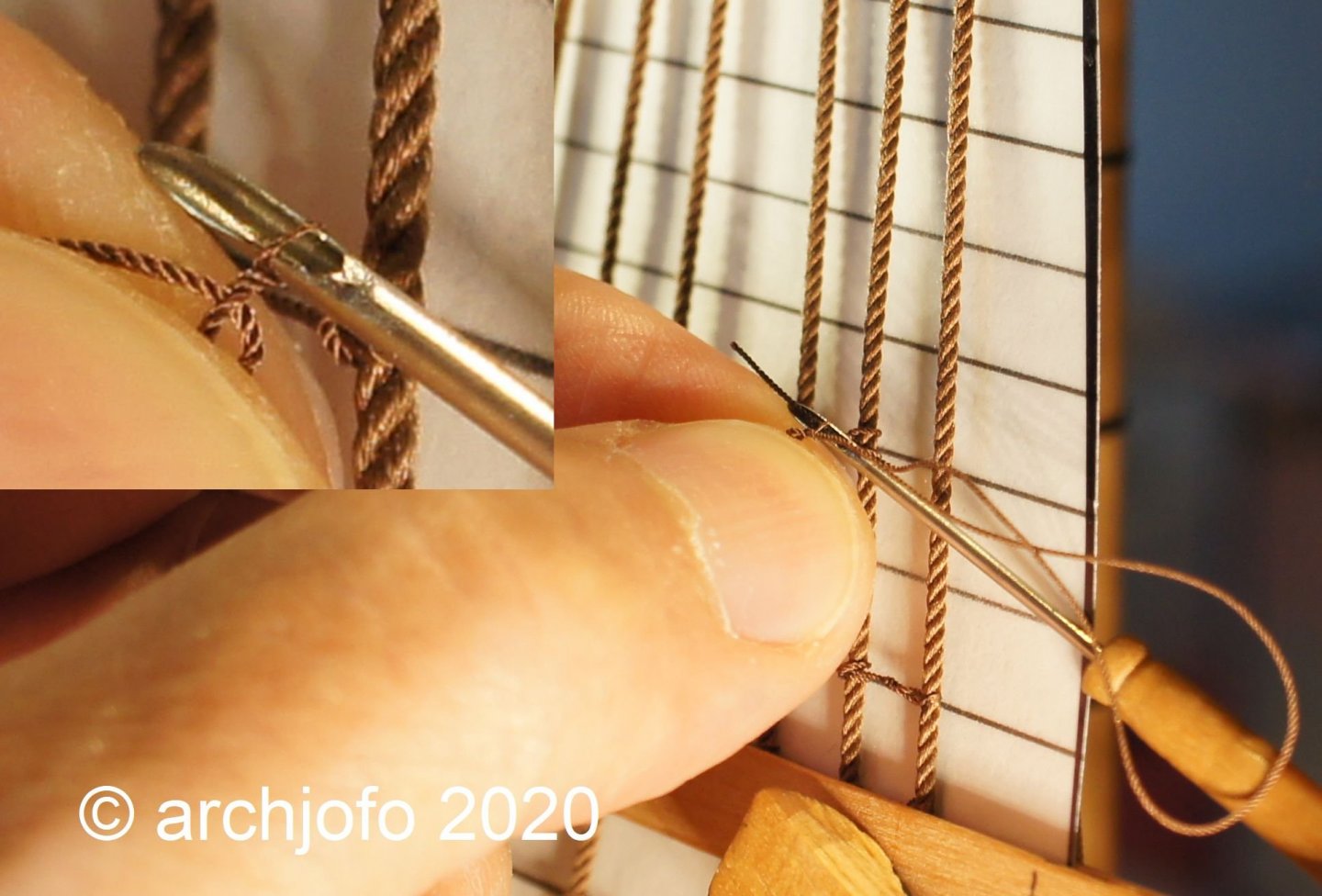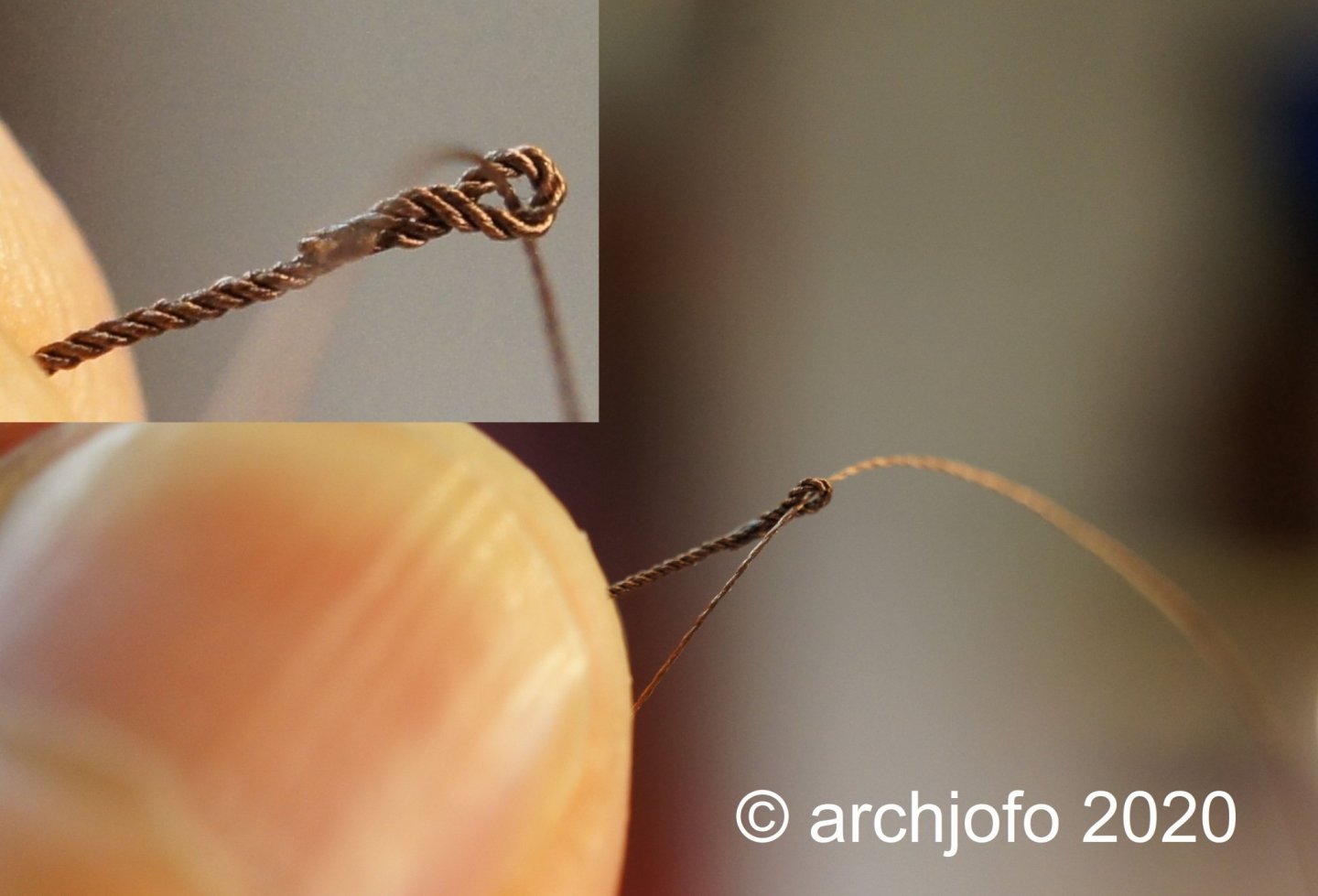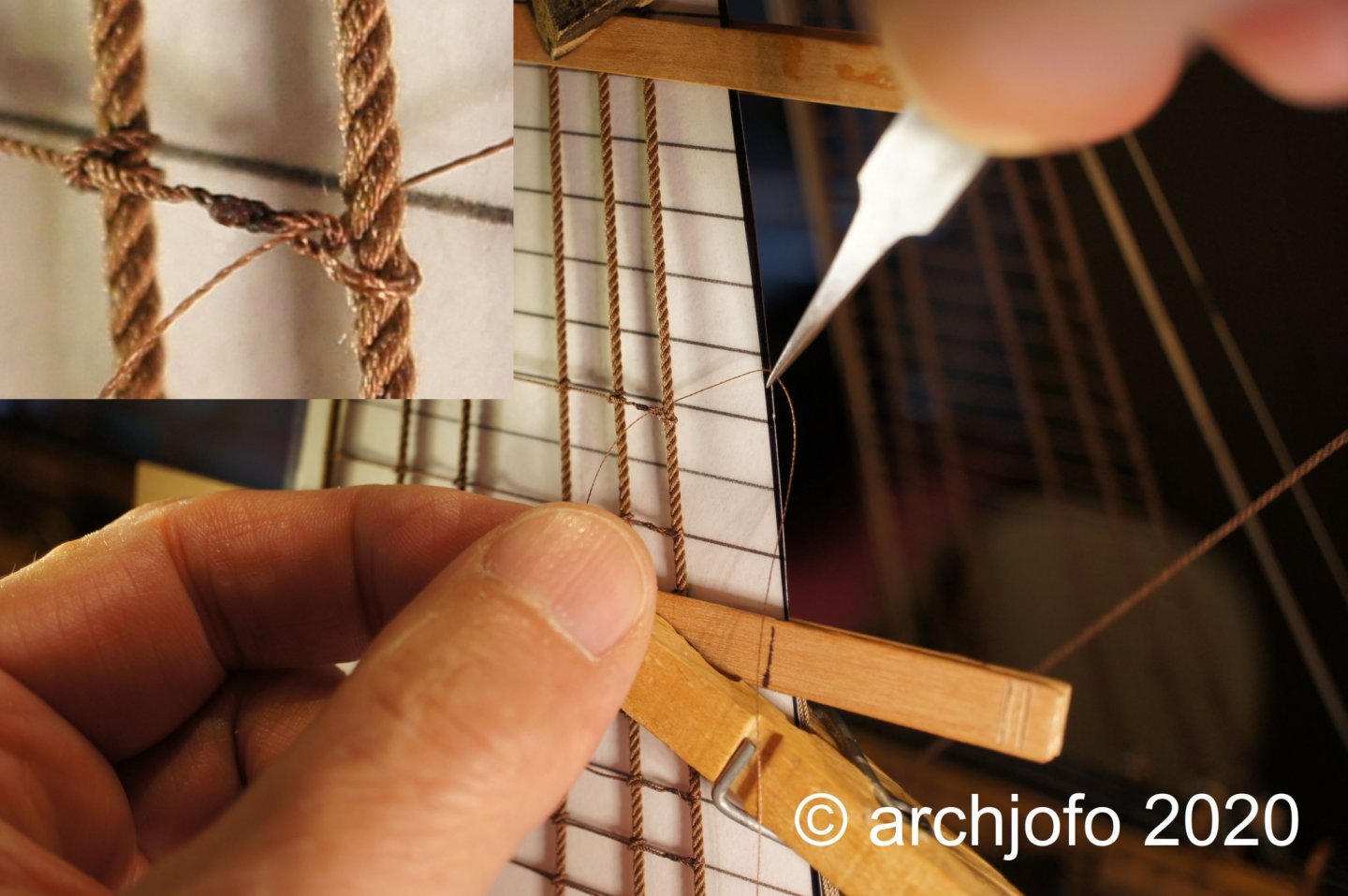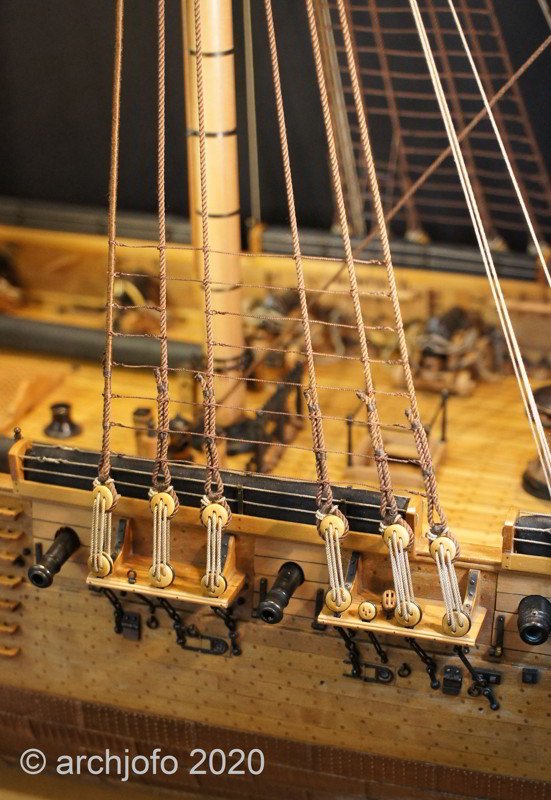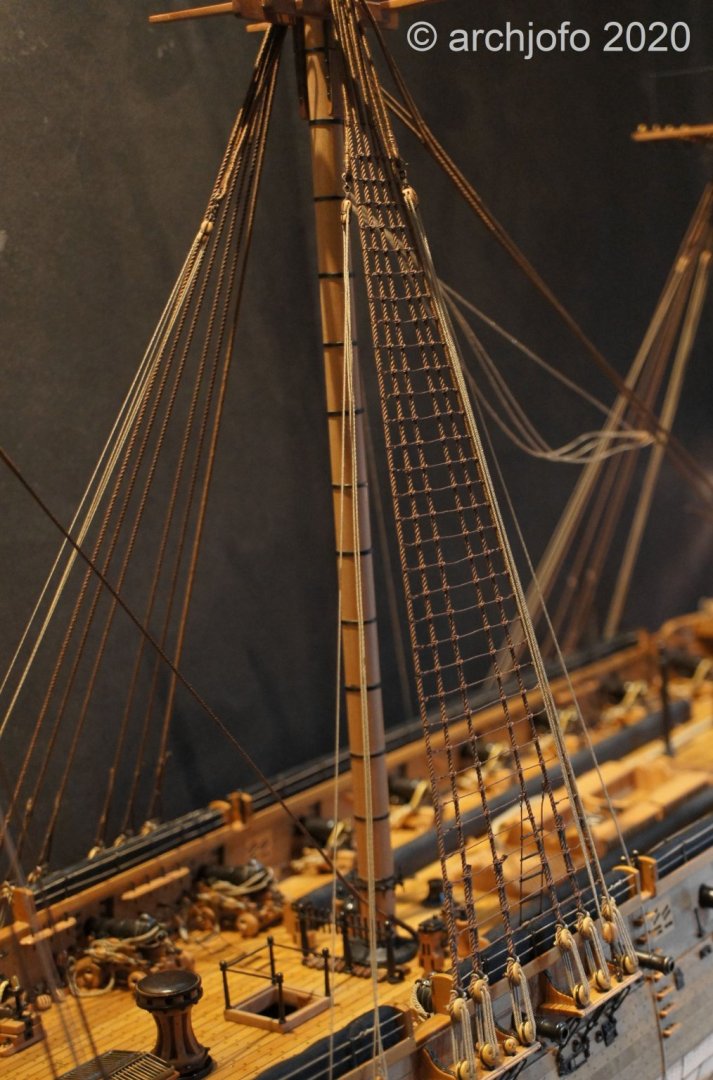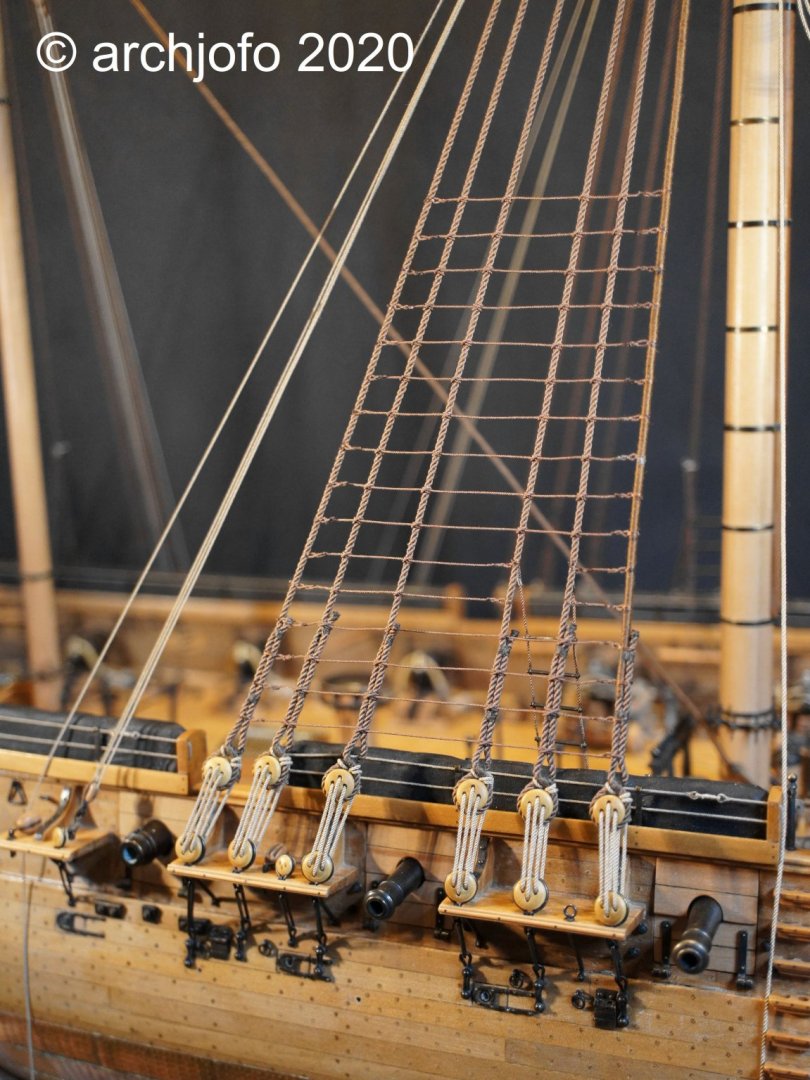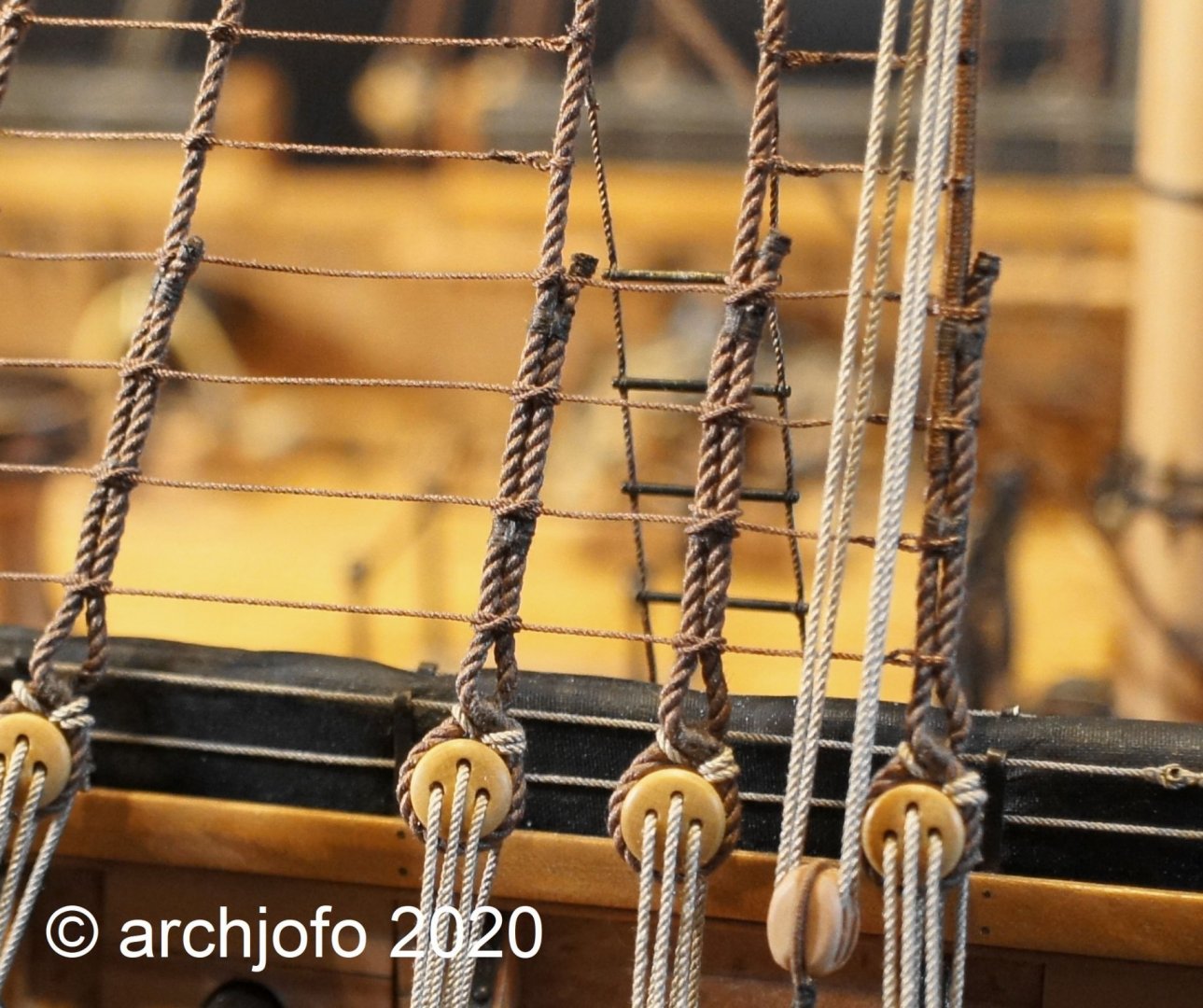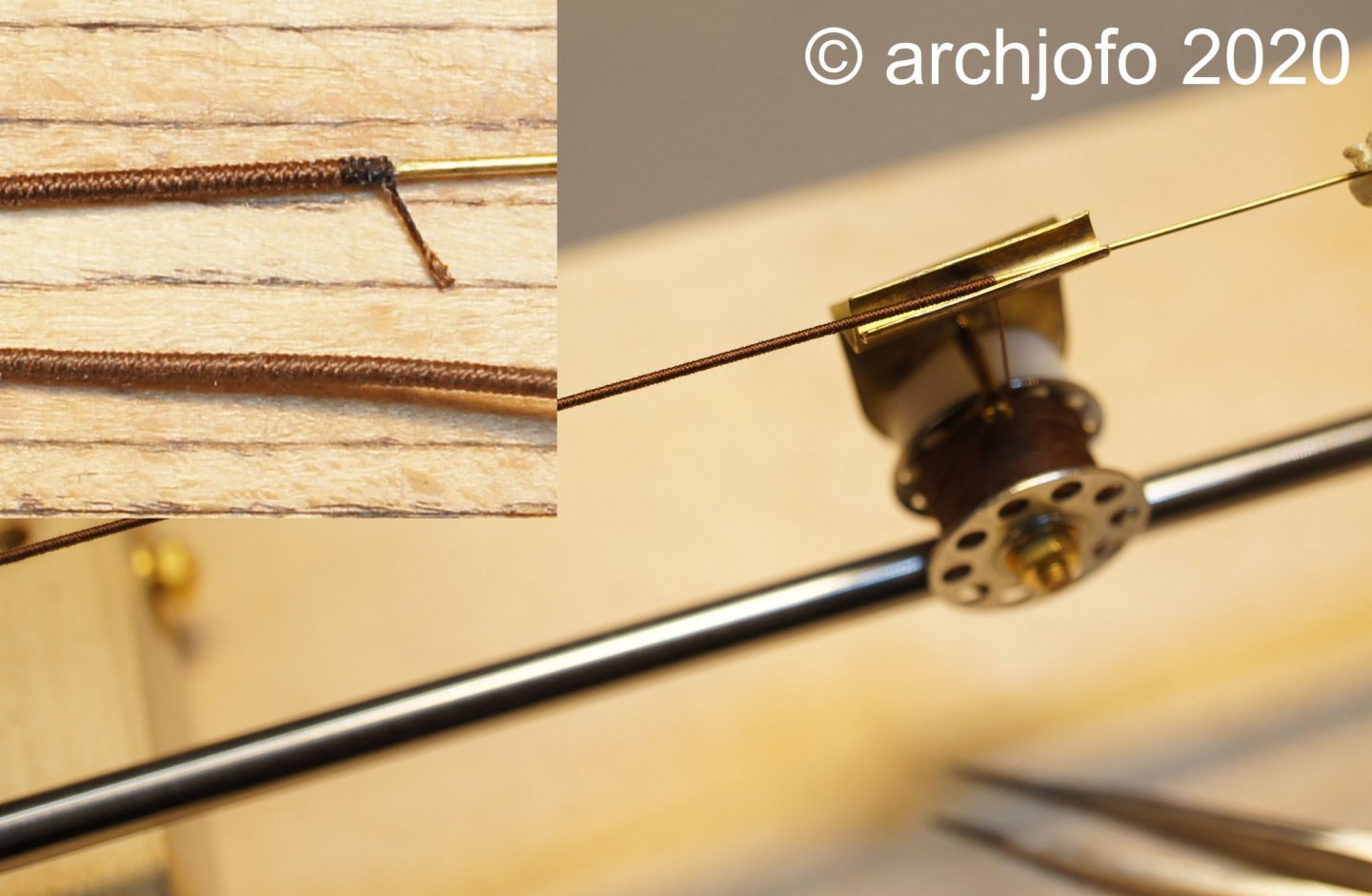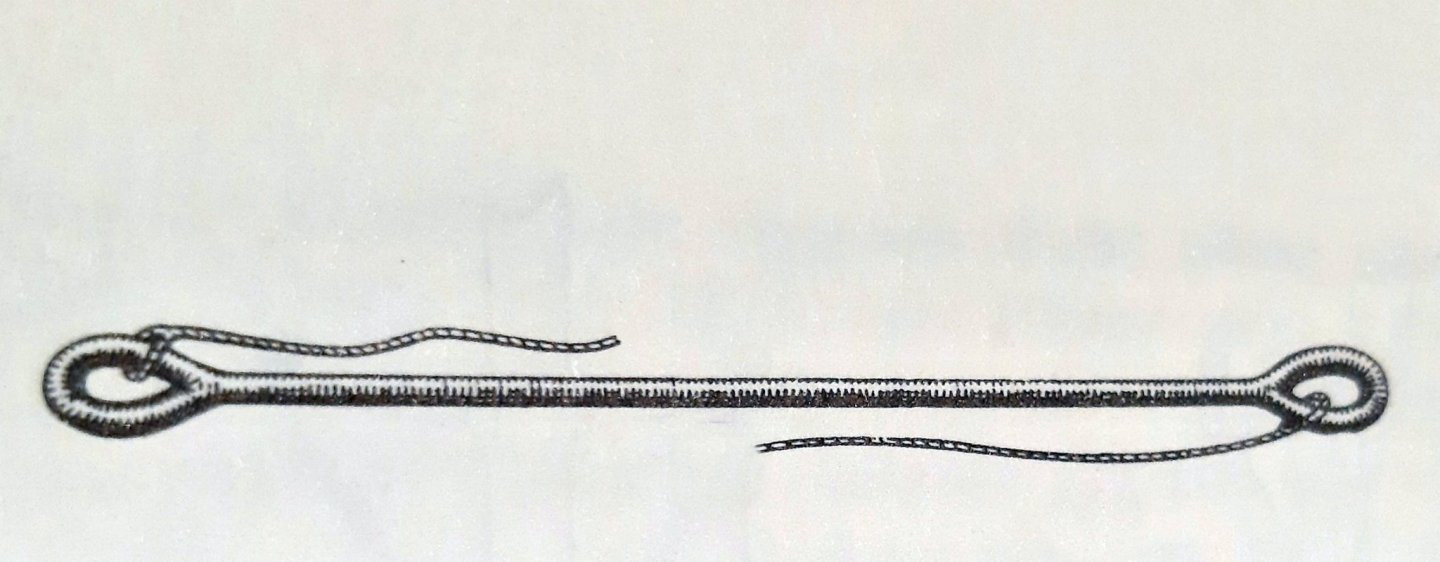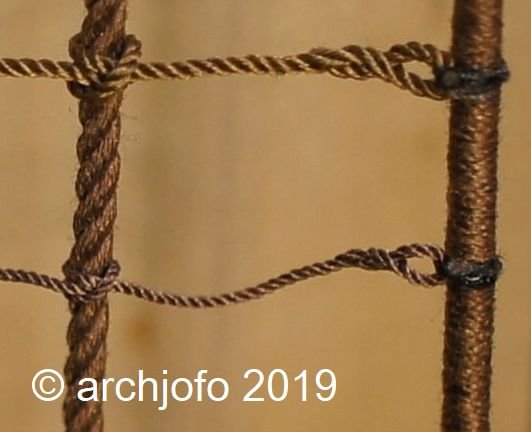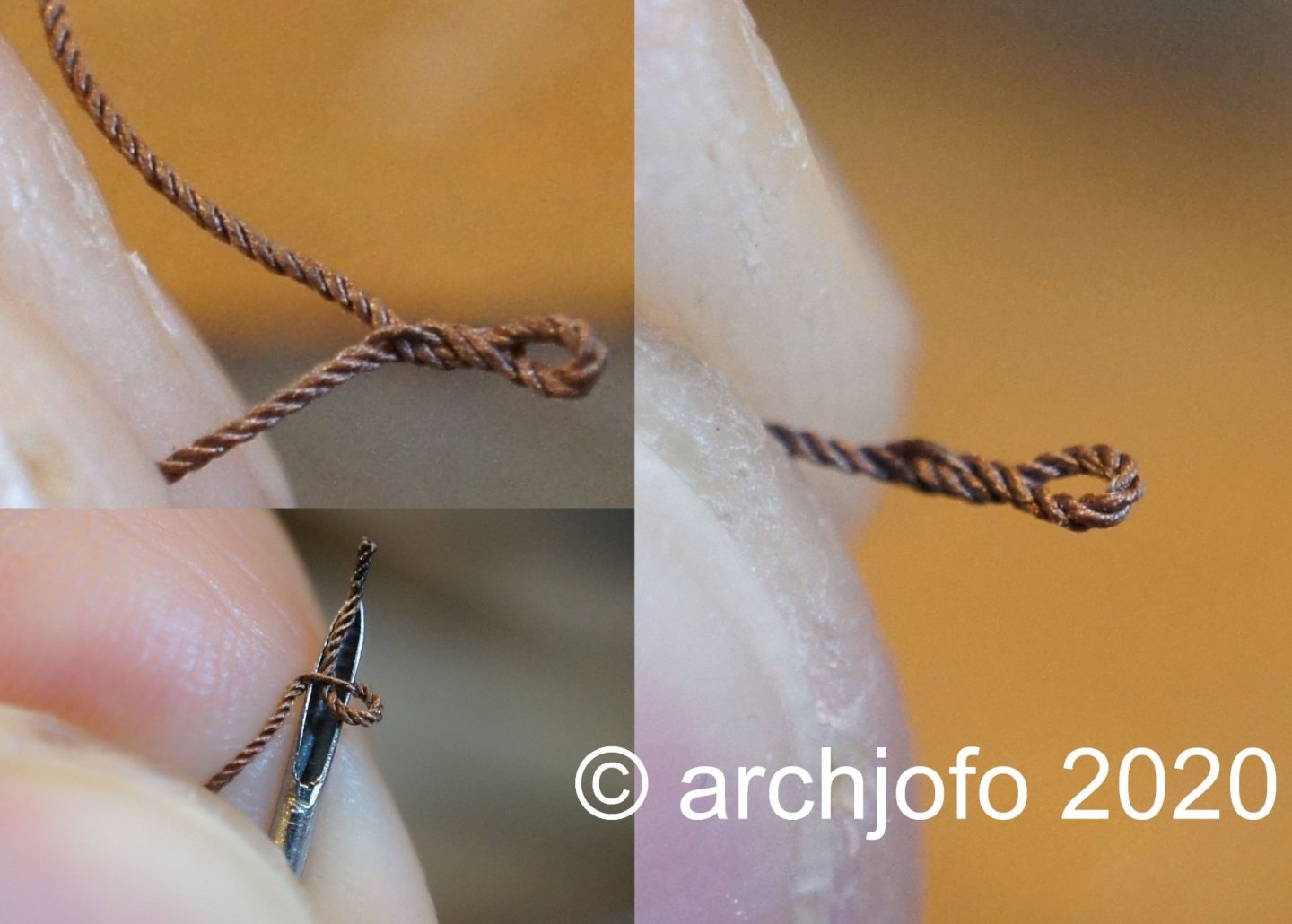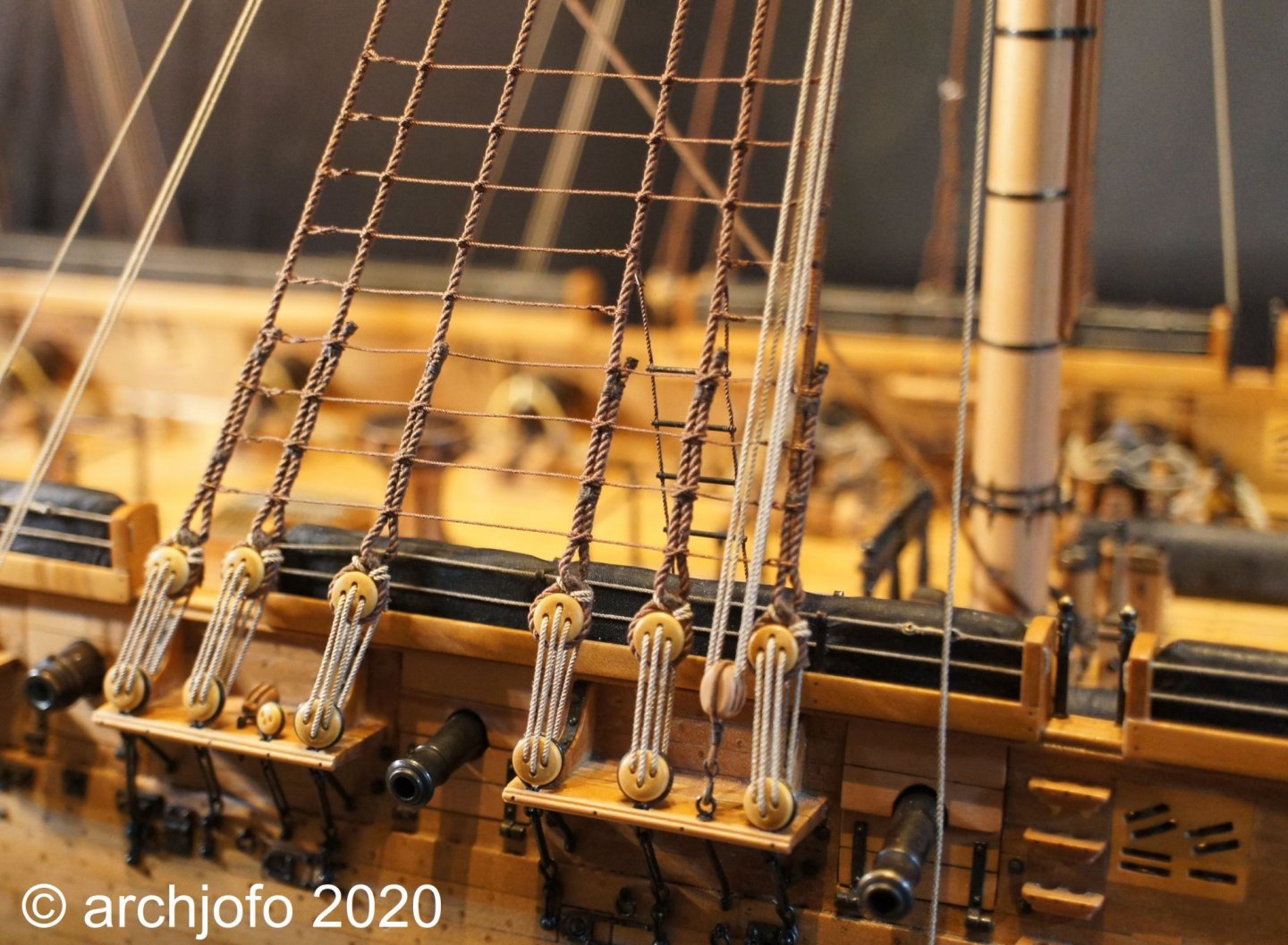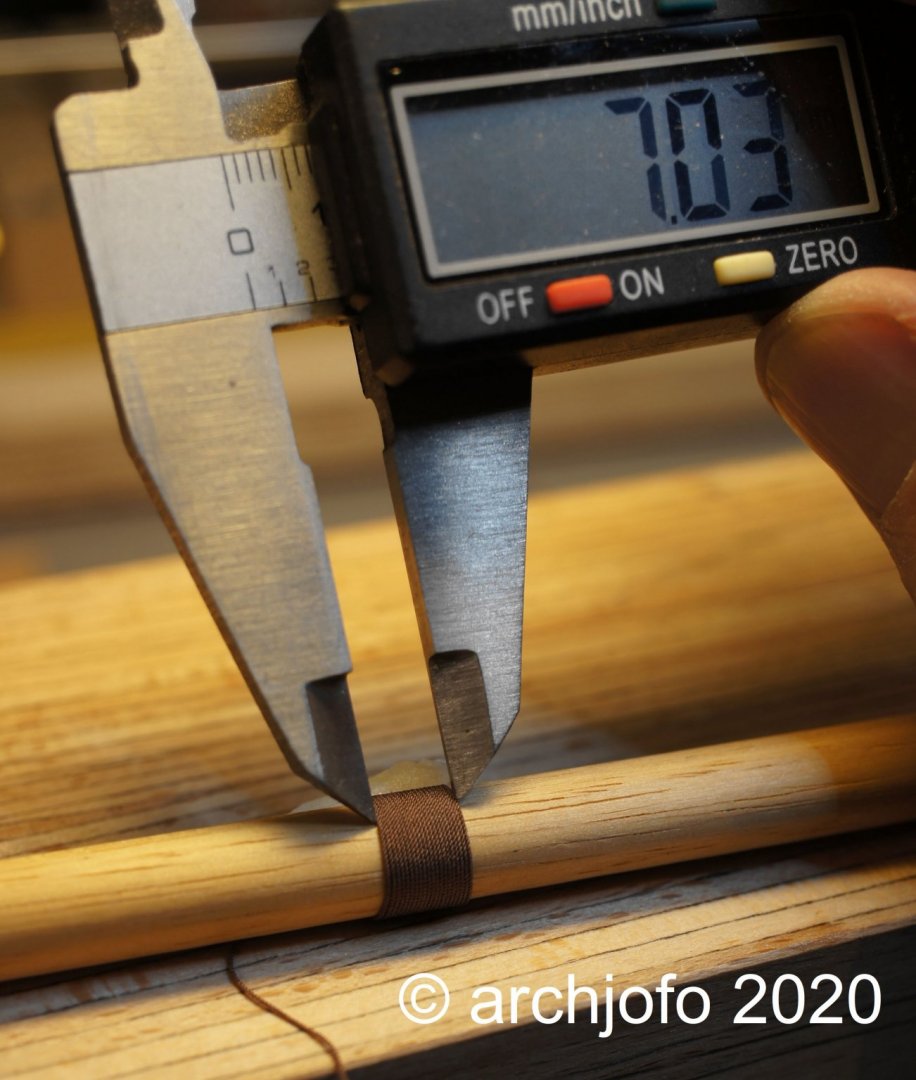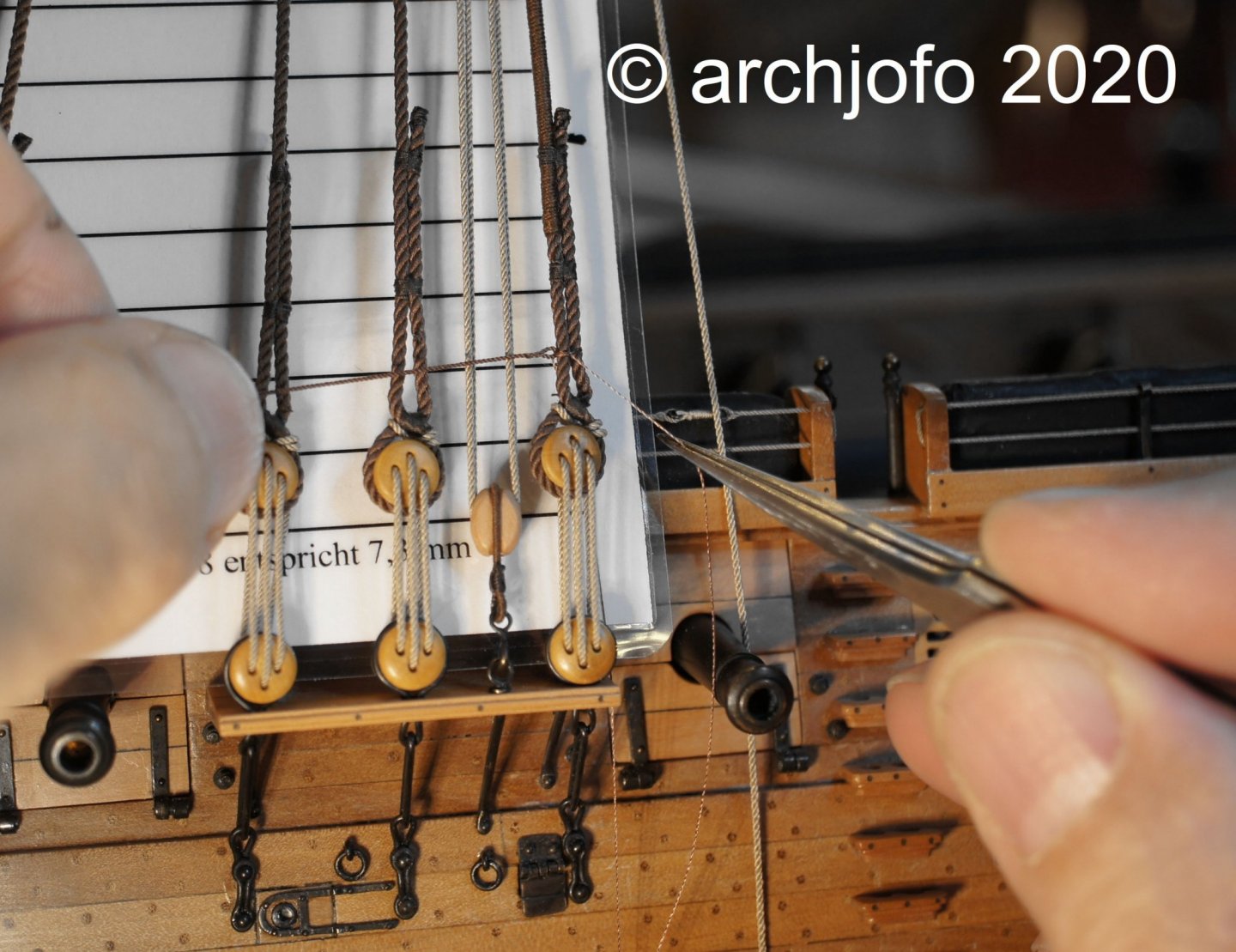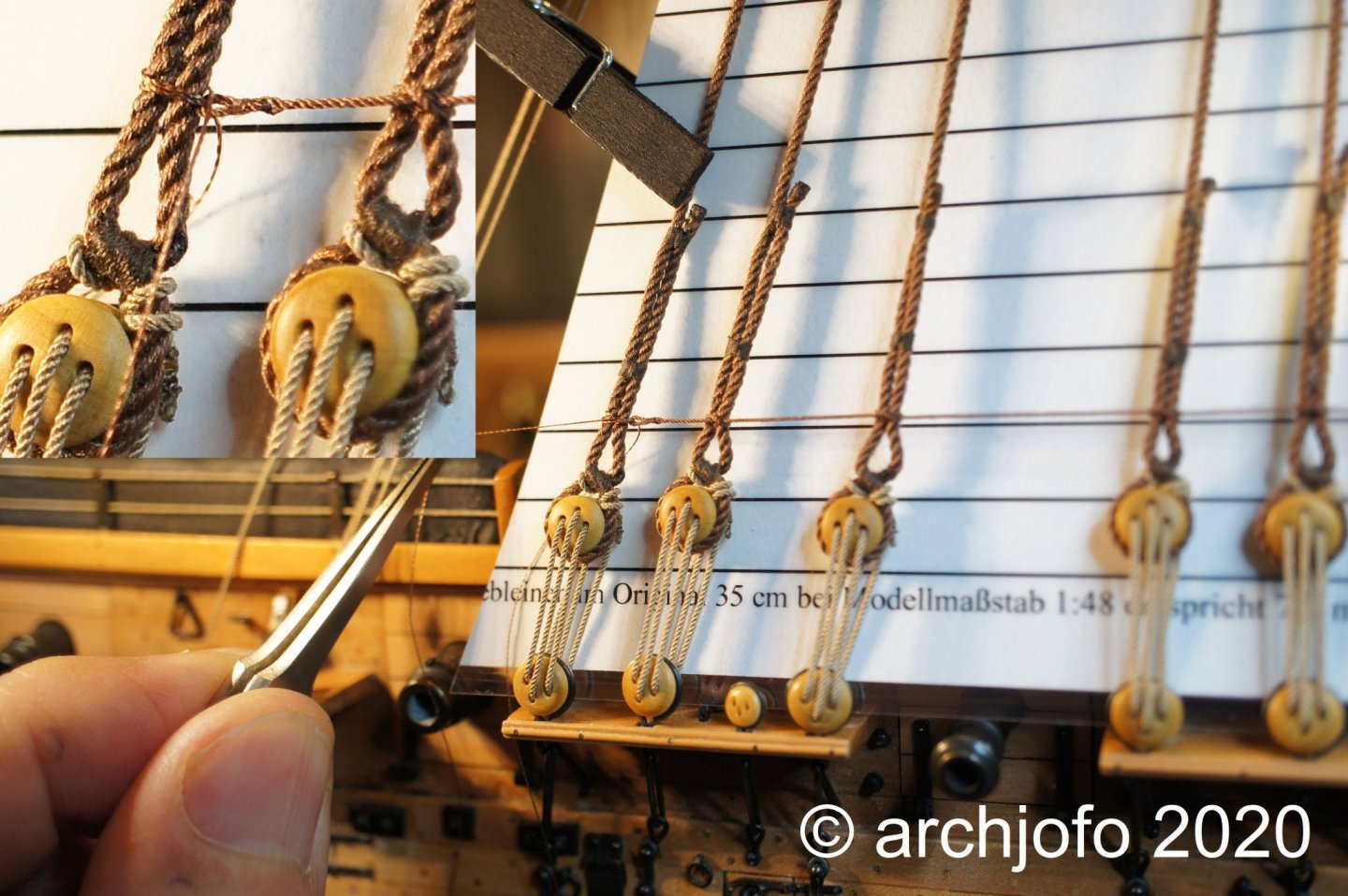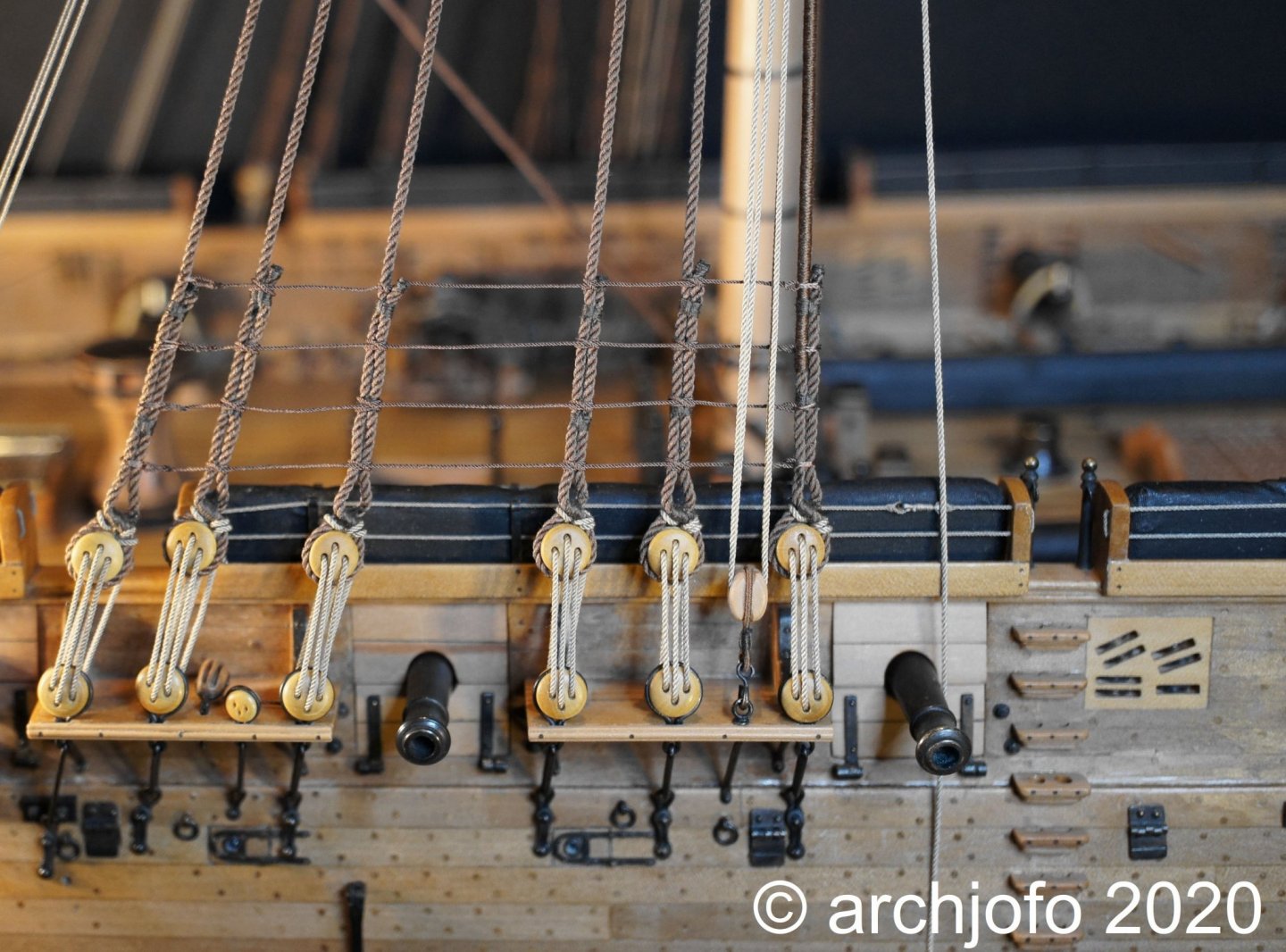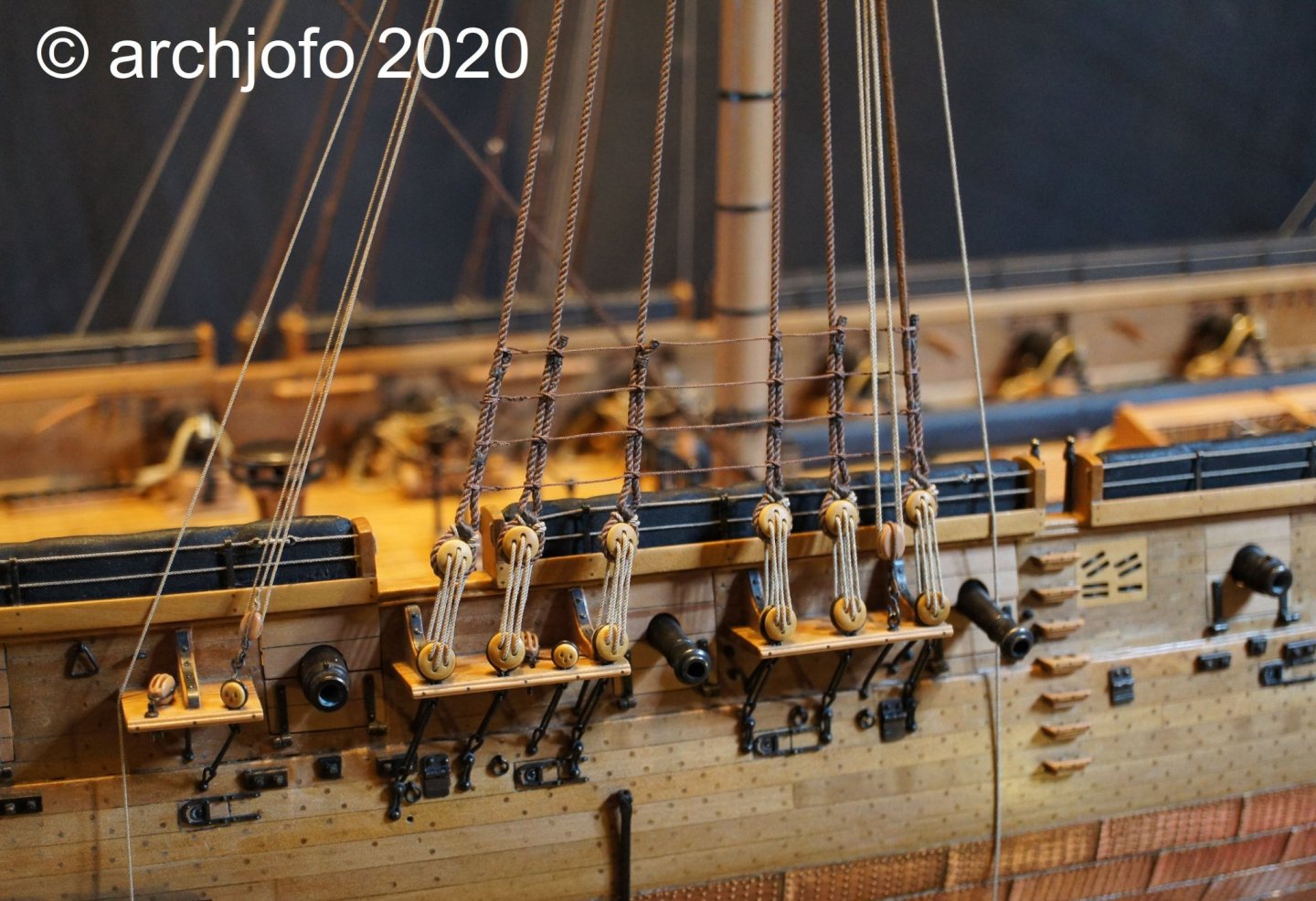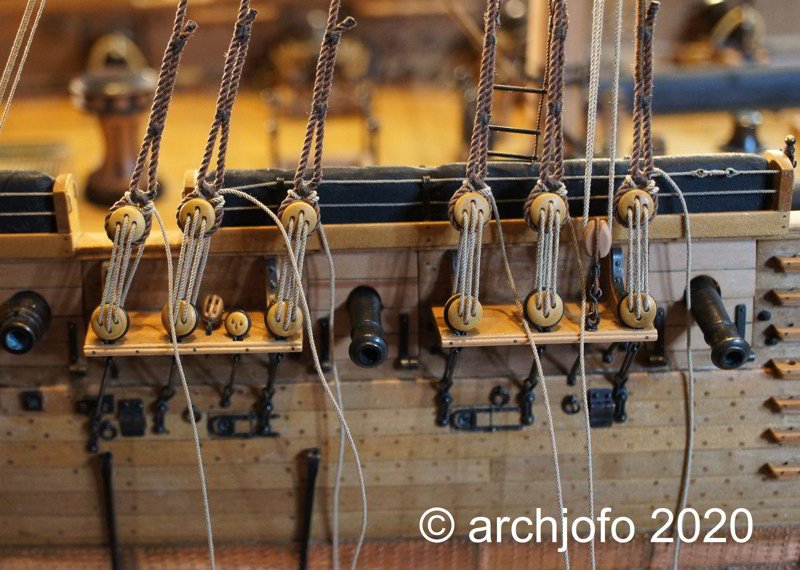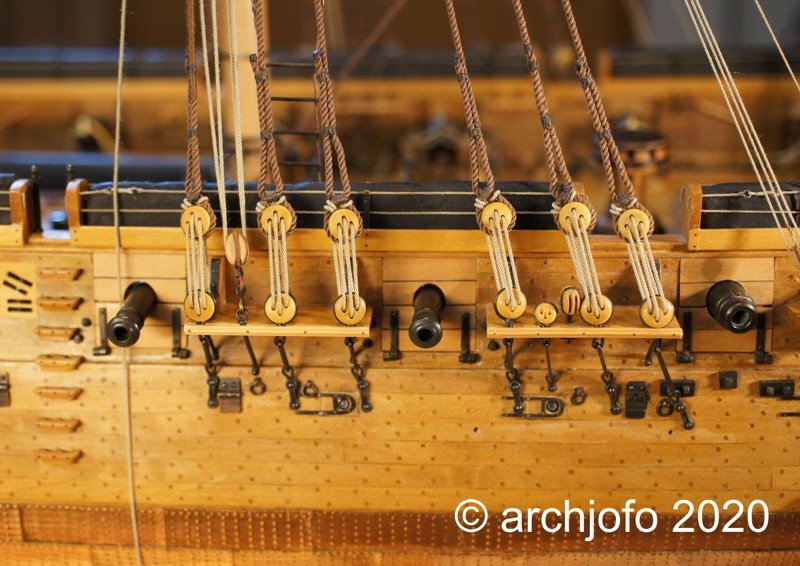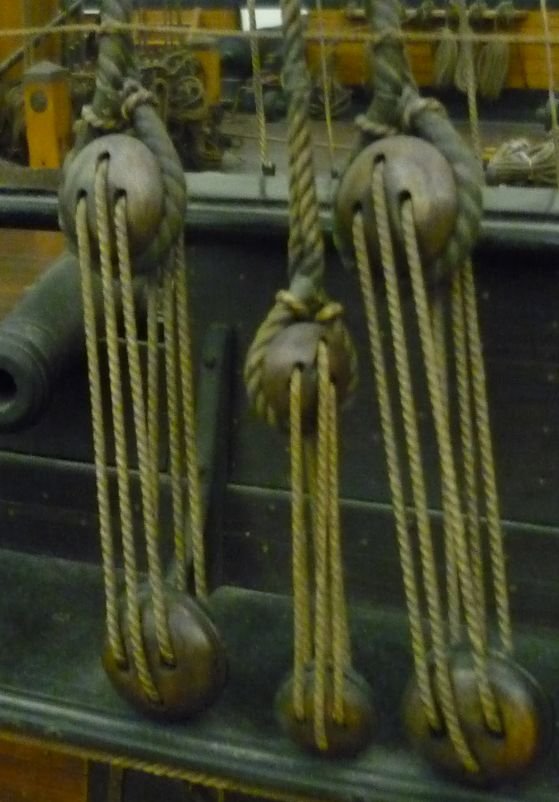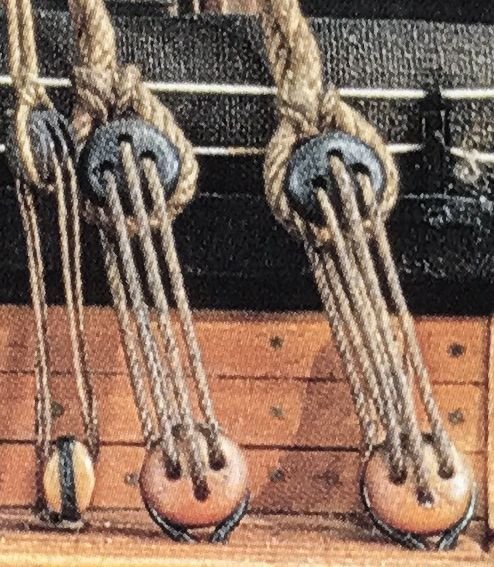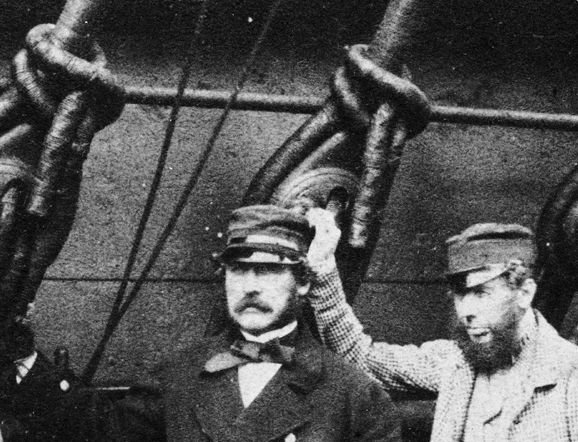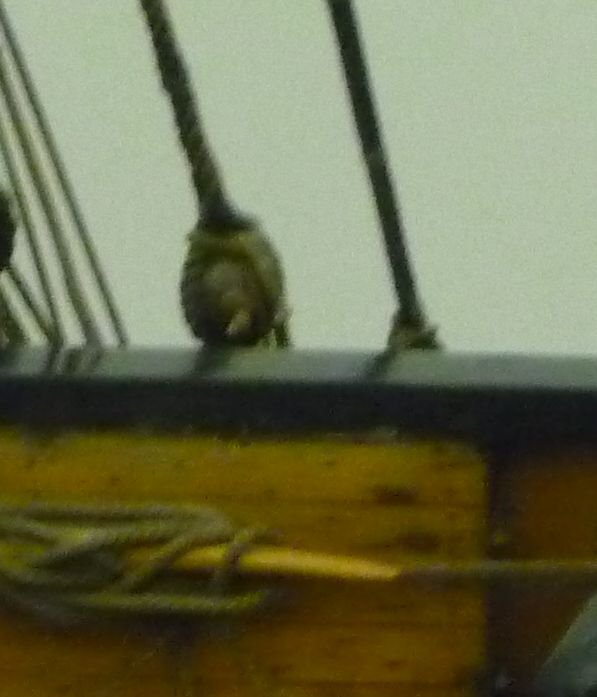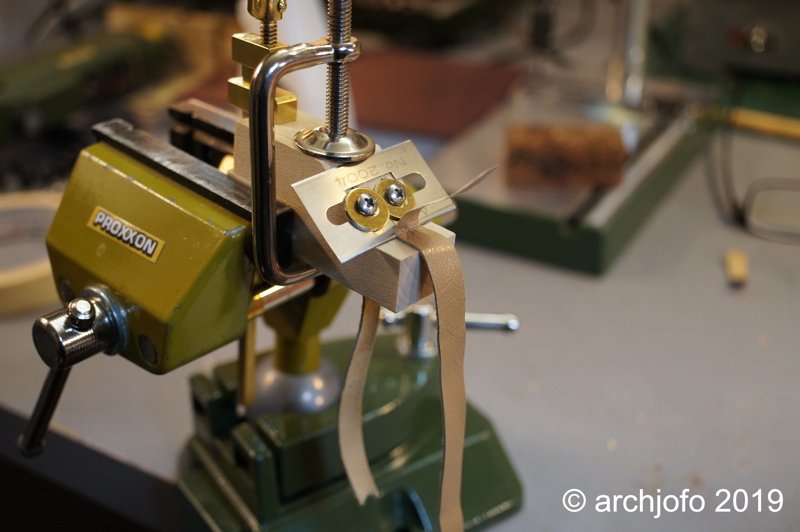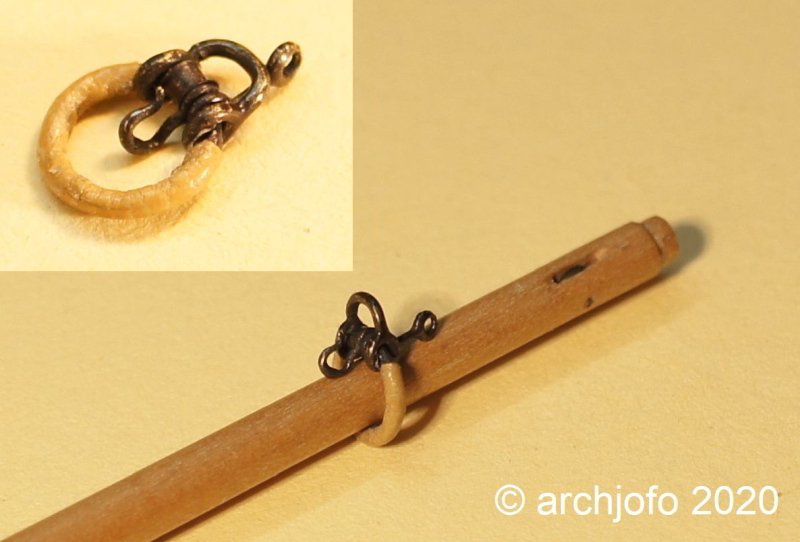-
Posts
1,495 -
Joined
-
Last visited
Content Type
Profiles
Forums
Gallery
Events
Everything posted by archjofo
-
This is model building on the highest level. I can learn a lot from you. Thanks for sharing.
- 589 replies
-
- le gros ventre
- cargo
-
(and 1 more)
Tagged with:
-
@druxey @davec Hi, thanks for the positive feedback, and also all the others for the LIKES. Slowly I work my way up the shrouds of the main mast with the ratlines. Today I want to give some details about the ratlines. Often pictures show more than words can describe. I hope that it is the same in this case. Enjoy the pictures:
-
Hi, Chuck, this has become a wonderful model. The rigging is also a dream. I admire your work, I can learn a lot from it.
- 1,051 replies
-
- cheerful
- Syren Ship Model Company
-
(and 1 more)
Tagged with:
-
Hi Greg, the masts and tops look fantastically good. An absolutely clean and precise work. Do you also use steel wool for the finishing ?
-
Hello, I was very intensively involved with the serving of ropes and built myself a rope serving machine. If you are interested you can read up on some things here LINK. Here you can also watch a video LINK.
-
@deadbrotherbear @paulsutcliffe @Jeronimo Many thanks for your kind remarks, and thanks to all others for the LIKES. Slowly it becomes clear to me, why I pressed myself around the beginning to weave the ratlines. But steadily and laboriously I work my way up the shrouds. There are even some fellow modellers who claim that this work can be mediative and very relaxing. But unfortunately I have not felt any of that so far. Therefore the motto is: Hold on! On the following picture you can see the current status of the ratlines for shrouds and the passage.
-
@Dziadeczek Hello, Thomas, thank you for your extremely well-intentioned comment. I was very pleased, of course also about the many LIKES. Hello dear model building friends, here it goes on with small steps. I make the ratlines on my own rope making machine from japanese silk yarn 100/2 (2 x 3), which gives a rope diameter of 0,35 mm. After the preparations, the first ratlines were made.
-

ancre Coureur by cafmodel - 1/48
archjofo replied to cafmodel's topic in - Build logs for subjects built 1751 - 1800
That's outstanding work. A wonderful model. -
That's outstanding work. A wonderful model. And for that, my deepest respect and admiration.
- 1,449 replies
-

ancre La Jacinthe 1823 by guraus - Scale 1:48
archjofo replied to guraus's topic in - Build logs for subjects built 1801 - 1850
Nice work ! -
@druxey @cog Hello, many thanks for the nice comments. Also many thanks for the LIKES. Here I continue with the report as follows: Today I will try a longer description. I hope that I express myself somewhat understandable, because my english is not so good. Lanyards of the deadeyes - ridages des caps de mouton Because I could not find any clear indications for securing the shrouds' lanyards for La Créole. I would like to pick up where I left off a long time ago. In the meantime I took care of some details, like remaining guide blocks on the bulwark, protective caps for the carronades and the travellers. Further extensive research and the study of many contemporary models concerning the securing of the lanyards for the shrouds brought me to the conclusion that there are many different types of construction, which can be seen depending on the era, but also were handled differently in different countries. As I also noticed, I think that many modelers do not pay enough attention to this detail. In this respect, I think it is a pity if on a sailing ship from the beginning of the 19th century the securing of the lanyards is the same as one before 1800. Surely some will say that these details were often left to the taste of the commander, which may have been the situation in individual cases. But especially in the Navy there were standards that can be read in the relevant contemporary literature. Source: Musée de la Marine Paris - Le Suffren 1829 Source: Musée de la Marine Paris - La Crèole As can be seen very well on the above picture of the 1:20 scale model of Le Suffren, the lanyards is looped twice around the shroud rope from behind. In the case of La Créole it is even twice in the bow direction, as it is also the case with the contemporary model of Le Rivoli. I already showed this example some time ago. What the viewer cannot see is how the end of the rope is ultimately secured. The then and later always common variant, where the ends of the lanyards were tied to the rope several times (see the following illustration), could not be seen on either Le Suffren or La Creole. Up to now I was not able to find a corresponding photo of the rear side of the upper dead eyes with the securing of the lanyards. So I continued my search to find information how the securing of the end of the lanyard could have ended behind the dead eyes. After a long search I finally found it. On the following picture the shrouds of the Great Eastern are to be seen from board. As you can see, the shortened ends of the lanyards were secured with two seizings. Source: Wikimedia - Captain Harrison of the Great Eastern - 1859 This could also have been the case with La Créole, Le Rivoli and Le Suffren. At least, there is some evidence for it, as the following picture detail shows, which I could find out meanwhile. It shows a dead eye of the contemporary model of Le Suffren from the bulwark. I mean to recognize a short end of a lanyard. Source: Musée de la Marine Paris - Le Suffren 1829 Unfortunately, I do not have any better picture material that could give clarity. Nevertheless, I will try a test for the model to be able to make a decision in the end. To be continued ...
-
Hello, first of all thank you Bob for your positive comment and all the others also for the LIKES. I had a short break. Picking up where I left off. The Travellers were often dressed in leather to protect the wood. For this I found the following: Source: The Naval Officer's Guide for Preparing Ships for Sea - Lt. C. Martelli_1838 We'll see how it goes.
About us
Modelshipworld - Advancing Ship Modeling through Research
SSL Secured
Your security is important for us so this Website is SSL-Secured
NRG Mailing Address
Nautical Research Guild
237 South Lincoln Street
Westmont IL, 60559-1917
Model Ship World ® and the MSW logo are Registered Trademarks, and belong to the Nautical Research Guild (United States Patent and Trademark Office: No. 6,929,264 & No. 6,929,274, registered Dec. 20, 2022)
Helpful Links
About the NRG
If you enjoy building ship models that are historically accurate as well as beautiful, then The Nautical Research Guild (NRG) is just right for you.
The Guild is a non-profit educational organization whose mission is to “Advance Ship Modeling Through Research”. We provide support to our members in their efforts to raise the quality of their model ships.
The Nautical Research Guild has published our world-renowned quarterly magazine, The Nautical Research Journal, since 1955. The pages of the Journal are full of articles by accomplished ship modelers who show you how they create those exquisite details on their models, and by maritime historians who show you the correct details to build. The Journal is available in both print and digital editions. Go to the NRG web site (www.thenrg.org) to download a complimentary digital copy of the Journal. The NRG also publishes plan sets, books and compilations of back issues of the Journal and the former Ships in Scale and Model Ship Builder magazines.



